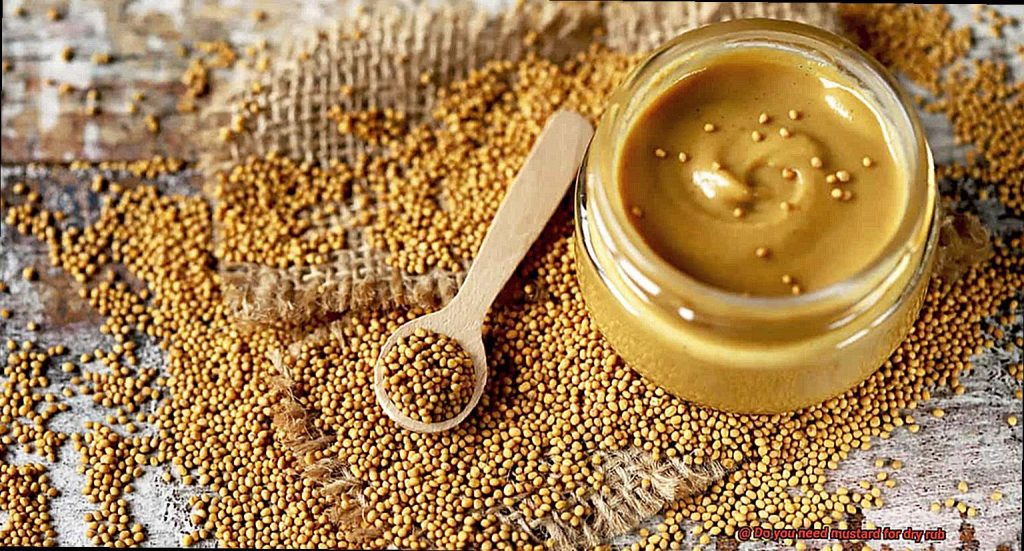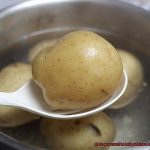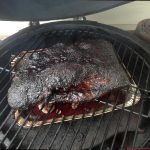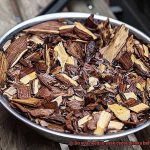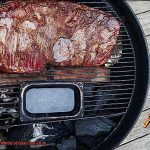Are you ready to up your BBQ game and create mouth-watering, flavorful meat masterpieces? If so, you’ve probably heard about dry rubs. But there’s one question that many BBQ enthusiasts are asking: do you really need mustard for dry rub?
Some people swear by using mustard as a binder for their dry rubs, claiming it helps keep the spices from falling off the meat and enhances the flavor. Others argue that mustard doesn’t make a significant difference and is just an unnecessary step. So what’s the truth?
In this blog post, we’ll explore the role of mustard in dry rubs and help you decide whether it’s worth adding to your next BBQ recipe. We’ll delve into the science behind using mustard as a binder and how it affects the flavor and texture of your meat. Plus, we’ll share some tips and tricks for using mustard in your dry rubs, along with alternative binders you can use.
Whether you’re a seasoned pitmaster or just starting out, this post has everything you need to know about using mustard in your dry rubs. Get ready to impress your friends and family with perfectly seasoned meat that packs a punch of flavor.
Contents
What is Dry Rub?
If you love the taste of perfectly grilled meat, then you must try using dry rub. Dry rub is a versatile seasoning mixture made up of a combination of spices, herbs, and other ingredients that add layers of flavor and texture to various types of meat.
When applying dry rub, it is essential to pat your meat dry before applying any rub. This ensures that the rub sticks properly and won’t be diluted by any excess moisture on the surface of the meat. Some grill masters even use mustard as a base layer for their dry rub, while others argue that it’s unnecessary and can even affect the flavor of the meat.
Dry rubs are an excellent way to add flavor and texture to your favorite meats, whether it’s chicken, beef, pork, or fish. The ingredients used in dry rubs can vary widely depending on personal preference and the type of meat being prepared. Common ingredients include salt, pepper, paprika, garlic powder, onion powder, cumin, and chili powder. For those who love experimenting with flavors, other ingredients such as brown sugar, coffee grounds, or cocoa powder can help create unique flavor profiles.
One of the best things about dry rubs is that they are easy to prepare and can be customized to suit your taste preferences. You can apply dry rub by rubbing it on with your hands or evenly using a brush. The mixture is then left to marinate on the meat for a period of time, allowing the flavors to be absorbed into the meat.
What is Mustard?
Mustard is a condiment made from the seeds of the mustard plant, which belongs to the Brassicaceae family and is native to Europe. It has become a staple in many households worldwide, thanks to its unique flavor and versatility in cooking.
There are three main types of mustard: yellow, brown, and Dijon. Yellow mustard is made from ground white mustard seeds, vinegar, and turmeric, giving it a mild tangy taste. Brown mustard, on the other hand, is a blend of black and brown mustard seeds and can pack a punch with its spicier flavor. Dijon mustard originates from France and is made from brown or black mustard seeds that have been soaked in wine or vinegar.
Aside from being a popular topping for hot dogs and sandwiches, mustard can also be used in marinades, salad dressings, and sauces. Its distinct yellow color can add visual appeal to dishes while enhancing their flavors. Mustard is also packed with nutrition – low in calories and fat but high in protein and fiber. It contains vitamins A, C, and K, as well as minerals like calcium, magnesium, and potassium.
Benefits of Using Mustard as a Base for Dry Rub
Fear not, because the solution lies in an unexpected place – mustard. Beyond just acting as a binder for dry rub, using mustard as a base offers a myriad of benefits that will elevate your grilling game.
One of the primary advantages of using mustard is its acidic properties. The slight tanginess of mustard helps to tenderize the meat by breaking down proteins, resulting in a tender and juicy end product that is sure to impress. But it doesn’t stop there – mustard also contains enzymes that can break down tough muscle fibers in the meat, making it easier to chew and enjoy.
But let’s not forget about flavor – mustard has a distinct taste that can enhance the overall flavor profile of your dish. It pairs well with a variety of dry rub blends and can add an extra layer of depth and complexity to your meat. The subtle tanginess of mustard can also balance out the richness of fatty cuts, creating a harmonious flavor experience.
Finally, using mustard as a base for dry rub can add an eye-catching golden-brown color to your meat. This not only looks visually stunning but also adds an additional layer of texture and flavor to your dish.
Drawbacks of Using Mustard as a Base for Dry Rub
While it can add a unique flavor and texture to your meat, there are definitely some drawbacks to consider before slathering it on.
Firstly, let’s talk about the taste. Mustard has a pungent flavor that can easily overpower other ingredients in your dry rub, making it difficult to achieve a balanced flavor profile. If you’re using a strong or spicy mustard, it’s even harder to find the right balance. So, if you’re aiming for a subtle taste that complements your meat, it may be best to explore other bases.
In addition, mustard can make your dry rub too wet. This is because mustard contains vinegar and other liquids that can cause the rub to clump together instead of forming a nice, dry crust on your meat. This leads to uneven cooking and potentially ruins the texture of your dish. To avoid this, try using less mustard or adding more dry ingredients to balance out the moisture.
Lastly, it’s important to consider any allergies or aversions to mustard. If you’re cooking for a large group of people, it may be safer to avoid using mustard in your dry rub altogether. This helps prevent any adverse reactions that could spoil the meal.
How to Apply Mustard as a Base for Dry Rub
Look no further than mustard as a base for your next BBQ. Not only does it provide a tangy flavor, but it also acts as a binder for the spices in the rub, ensuring that it evenly coats the meat. Here’s how to apply mustard as a base for your dry rub:
Choose a top-notch mustard
Dijon or whole grain mustard are excellent options due to their robust flavor profiles that can complement your rub’s flavors.
Prepare your meat
Before applying the mustard, make sure to rinse and pat your meat dry with paper towels. This will guarantee that the rub sticks correctly and isn’t diluted by any excess moisture on the surface of the meat.
Apply a thin layer of mustard
Use a brush or your hands to apply a thin layer of mustard to the meat, ensuring that all sides are evenly coated. Don’t overdo it with the mustard, as you don’t want it to overpower the other flavors in the rub.
Sprinkle on your dry rub
Once your meat is coated in mustard, sprinkle on your dry rub, gently pressing it into the mustard layer to make sure it adheres.
Let it rest
Let your meat sit for at least 30 minutes (or even up to overnight) in the refrigerator to allow the flavors to meld together and fully penetrate the meat.
Cook as desired
When you’re ready to cook, grill or bake your meat as desired. You’ll end up with a deliciously seasoned dish that will have everyone asking for seconds.
Best Practices for Applying Mustard with Dry Rubs
Look no further than mustard, the secret ingredient to take your dry rubs to the next level. As an expert in this field, I have compiled a comprehensive list of best practices to help you achieve perfect results every time.
First and foremost, choose the right type of mustard. Opt for plain yellow or Dijon mustard to avoid overpowering your dry rub flavors. Then, apply a thin layer of mustard evenly on all sides of your meat. This not only adds a delicious tang but also helps the dry rub stick to the meat.
When adding the dry rub, use enough to fully cover the meat but not so much that it clumps or falls off easily. Gently pat the rub into the mustard base, ensuring it adheres well to the meat. This will create a flavorful crust on your meat while keeping it moist and tender.
After applying both the mustard and dry rub, it’s crucial to let your meat rest for a period of time. Depending on the type and thickness of meat, refrigerate for several hours or overnight. This allows the flavors to meld together and penetrate deeply into the meat.
When it comes time to cook your meat, be sure to follow proper grilling or smoking techniques. Keep an eye on temperature and cooking time, using a meat thermometer to ensure it reaches your desired level of doneness. Whether you prefer rare, medium-rare, or well-done, your meat will be perfectly seasoned and juicy every time.
Alternatives to Using Mustard with Dry Rubs
Fear not, there are several alternatives that can elevate your grilling game. Here are some options to consider:
First, we have olive oil. This versatile ingredient not only helps the dry rub adhere to the meat, but it also adds a subtle flavor that complements the spices in your rub. Simply drizzle some olive oil onto your meat and apply the dry rub as usual.
If you’re looking for something completely different, try using mayonnaise as a binding agent. Spread a thin layer of mayo onto your meat before adding the dry rub. The mayo will help the rub stick to the meat and add some creaminess to the final dish.
For those who prefer to skip spreads altogether, wet rubs are an excellent alternative to traditional dry rubs. Made with a mixture of spices and liquids like vinegar or soy sauce, the liquid in the wet rub will help it stick to the meat without needing any additional binding agent.
Lastly, don’t underestimate the power of simplicity. A classic salt and pepper rub can be just as delicious as more complex dry rubs. Sprinkle some salt and pepper onto your meat before grilling or smoking, and watch as it develops a delicious crust bursting with flavor.
Tips and Tricks for Grilling with Dry Rubs
Grilling with dry rubs is an excellent way to add flavor and zest to your grilled meats. With a little bit of experimentation and knowledge, you can become a pro at grilling with dry rubs. Here are some tips and tricks to help you get started.
Choose the right cut of meat
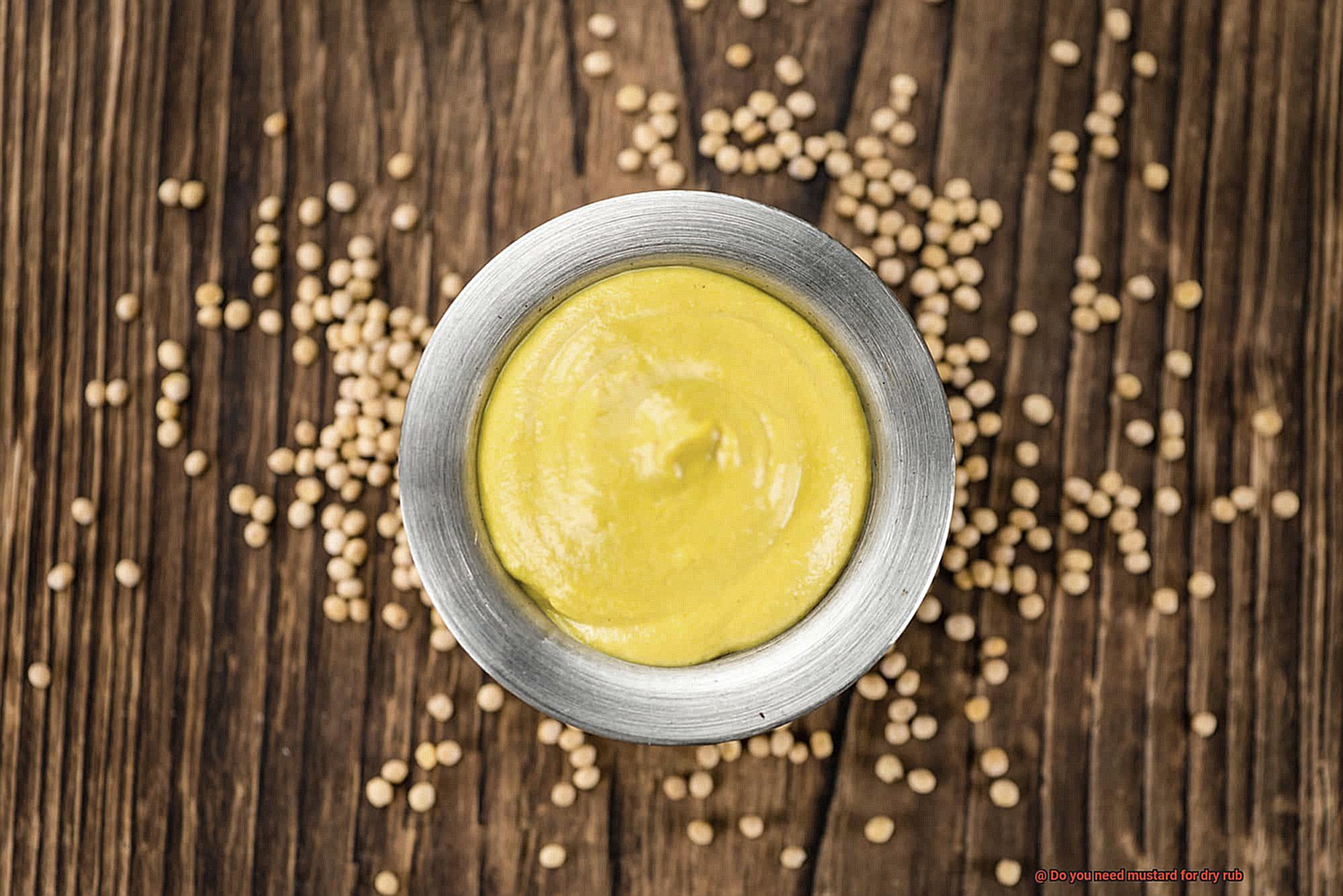
When using dry rubs, it’s essential to choose the right cut of meat. Some cuts are better suited for dry rubs than others. For instance, cuts like ribs, brisket, and pork shoulder have lots of surface area for the rub to adhere to. Leaner cuts like chicken breasts or steaks may not be as receptive to dry rubs. Therefore, before selecting your rub, consider the type of meat you’re working with.
Make the perfect dry rub
The beauty of making your own dry rub is that there are endless possibilities. You can use any combination of herbs and spices that you like. However, it’s crucial to create a balanced flavor profile by not going too heavy on any one spice. For a basic blend, try mixing salt, pepper, garlic powder, and paprika.
Apply the dry rub evenly
To get the most out of your dry rub, make sure you apply it evenly to all sides of your meat. Use your hands to massage the rub into the meat, ensuring that it’s well coated. If you’re short on time, you can apply the rub a few hours before grilling and let it sit in the refrigerator to marinate.
Use indirect heat
When grilling with dry rubs, it’s necessary to use indirect heat. This means that you’ll cook the meat on a cooler part of the grill away from direct flames. This will allow the meat to cook more slowly and evenly, resulting in a tender and flavorful finished product.
Let your meat rest
After grilling, it’s crucial to let your meat rest. This will allow the juices to redistribute throughout the meat and result in a more tender and flavorful finished product. Simply cover your meat with foil and let it rest for 5-10 minutes before slicing and serving.
e1T-KBh0F9g” >
Conclusion
After a thorough exploration of the question “Do you need mustard for dry rubs?” it’s clear that there are varying opinions among BBQ enthusiasts. While some swear by using mustard as a binder, others argue that it can affect the flavor of the meat. However, delving into the science behind mustard as a binder reveals several benefits when used correctly.
Mustard’s acidic properties tenderize the meat by breaking down proteins, resulting in a juicy and tender end product. It also contains enzymes that break down tough muscle fibers, making it easier to chew and enjoy. Additionally, mustard adds a distinct taste that enhances the overall flavor profile of your dish and balances out fatty cuts’ richness.
When applying mustard as a base for your dry rubs, choose plain yellow or Dijon mustard to avoid overpowering your dry rub flavors. Apply a thin layer evenly on all sides of your meat before adding your dry rub mixture. Letting your meat rest for at least 30 minutes (or even up to overnight) in the refrigerator allows flavors to meld together and fully penetrate the meat.
If you prefer not to use mustard, several alternatives such as olive oil or wet rubs are available. Regardless of which method you choose, grilling with dry rubs is an excellent way to add flavor and zest to grilled meats.

